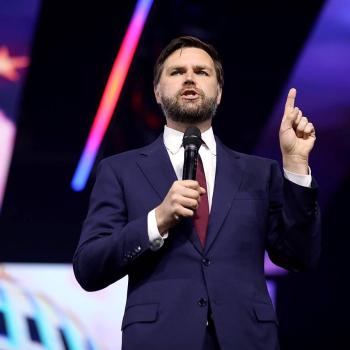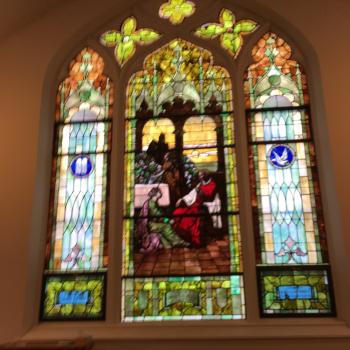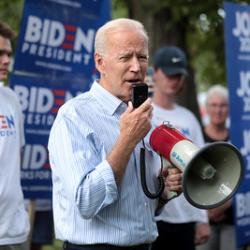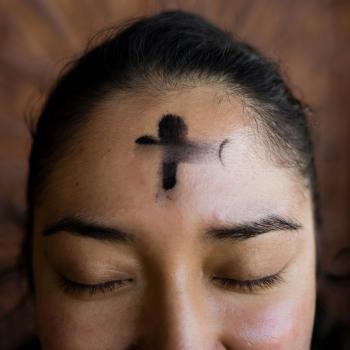Part 1: Memory and Identity of the Mexican American Community
A New Consciousness: Attitudinal Shifts in the Catholic Church in Houston
Treviño notes that in the first years of the establishment of the Mexican community in Houston, there appeared to be a clash of religious practices between those expressed within ethno-Catholicism, characterized by vibrant family- and community-centered traditions, and those that were expressed by American Catholicism, generally characterized as more intellectual and institutionally-based. This conflict in practices and ways of living the faith prompted some in the Church hierarchy to look down upon the religious practices of the Mexican communities, characterizing their faith as “infant” and deficient due to the absence of “American values.”[1] It is worth noting that the Church’s perception that the Mexicans were in need of more catechesis was not altogether unfounded. A symptom of this valid concern may be expressed in an anecdote that Treviño recounts: a Mexican parishioner once asked a priest to bless a religious picture of someone who they considered to be a “miracle-worker” but actually turned out to be a picture of Martin Luther! [2] Undoubtedly, there was an urgent need for pastoral guidance and faith formation for the Mexican and Mexican American community. However, it is the way in which the Church approached the task that ultimately defined the relationship between the hierarchy and the nascent faith community. According to Treviño, many clergy considered the root of the Mexicans’ social problems and shortcomings in the practice of their religion to be their race and cultural traits, which were attributed as the cause of their lack of intelligence. [3] Based on these perceptions, it becomes clear, then, that the Church hierarchy of the time helped perpetuate the social inequality of Mexicans rather than alleviating it. [4] This is not to say, however, that these judgments were uniform across the whole of the Church hierarchy in Houston or that the Church had turned a blind eye to the socio-economic problems that the Mexican community faced. Many priests, in fact, agonized over the poverty and destitution that Mexicans and Mexican Americans suffered. [5]
During the 1940s and 1950s, Treviño highlights the shifting attitudes that took place within the Church hierarchy towards Mexican Catholicism. The clergy started to grow in its appreciation for the “vibrant” aspect of Mexican Catholicism. [6] In addition, instead of blaming the precarious economic conditions and “unintellectual” aspect of the Mexicans’ faith on their racial and cultural handicap, Church representatives started to understand that the real root of the problems was a history of social and economic deprivation in their homeland as well as in the United States. Consequently, there were growing efforts on the part of the Church in Houston to help the Mexican community assimilate into American society and the Catholic Church through “funding, flexibility regarding language needs, and religious leadership to combat the social and economic prejudice that prevented this assimilation from taking place.” [7] A few years later, the measures dictated by the Second Vatican Council in its efforts to open the Church to the world and to have a more positive view of local churches and diverse traditions, catalyzed the incorporation of the Mexican community to the Church. [8] It is also worth noting that during this time discussion of race as a handicap was absent and there seemed to be a growing awareness within the Church of the “Mexican’s community growing heterogeneity and its surging politicization.” [9] This realization prompted the Church to expand and improve its pastoral strategies to meet the needs of the growing Mexican community.
During the Civil Rights Movement, the Church in Houston realized that it had lagged behind in the struggle for justice for the Mexican and Mexican American community in forming a unified and institutional response to the problems that this community was facing. It is not that the Church had not been actively involved in the struggle for equality and justice for the Mexican and Mexican American community. Rather, the previous ongoing effort, although quite fervent and strong, had been led solely by individual priests and nuns, which proved to be unsustainable and insufficient, especially in the midst of the Civil Rights protests. An institutional response from the Church was sorely needed to meet the pastoral demands of the growing Mexican community. Bishop Byrne of the Galveston Diocese called for an increase in social ministry when he admitted that the battle for Social Justice could no longer be neglected by the Church. [10] In 1972, this institutional response became a reality when the Catholic Church in the United States called the first Pastoral Congress for the Spanish-speaking, which was seen as a major step toward addressing the pressing pastoral needs not only of the Mexican community, but also of the Hispanic community as a whole. In sum, the Church grew in its understanding of the Mexican community with regard to its ethno-Catholicism and day-to-day struggles. The Church came to realize the importance of this community and that its needs had to be met through active and far-reaching ministry that had little precedent within the local Church. Because there was no clear dividing line between religion and other aspects of life, the ministry of the Church to the Mexican and Mexican American community had to transcend the boundaries of the churches and parish buildings, meeting the concerns and needs of this particular community that dealt with their daily lives.
We can conclude that the Church, in this particular case, had to shift her self-understanding from a strictly institutional one to one of service. Relying on Avery Dulles’ models of the Church, we can go on to say that in her developing response to the needs of the Mexican community, the Church balanced her strict understanding of “Church as Institution” with that of “Church as Servant.” This is not to say that the Church in Houston ceased completely from understanding herself as an institution, which in fact turned out to be an asset when the Church put forth a more organized response to the social problems of the Mexican community. The argument is that there simply cannot be an overemphasis on the institutional elements within the Church to the point that they become the end in themselves rather than the means to fulfill the mission of the Church “of proclaiming and establishing among all peoples the kingdom of Christ and of God.” [11] As Dulles notes, the “institutional elements in the Church must ultimately be justified by their capacity to express or strengthen the Church as a community of life, witness, and service, a community that reconciles and unites men in the grace of Christ.” [12] In other words, the Church’s self-understanding as institution can only be viewed in light of her overall mission in the world.
[1] Treviño 83.
[2] Treviño 90.
[3] Treviño 89.
[4] Treviño 84
[5] Treviño 85
[6] Treviño 85
[7] Treviño 98
[8] “…within the Church particular Churches hold a rightful place; these Churches retain their own traditions, without in any way opposing the primacy of the Chair of Peter, which presides over the whole assembly of charity and protects legitimate differences, while at the same time assuring that such differences do not hinder unity but rather contribute toward it”. (Lumen Gentium 13).
[9] Treviño 98
[10] Treviño 171.
[11] Lumen Gentium 5
[12] Avery Dulles, Models of the Church (New York: Image, 1978) 50.












